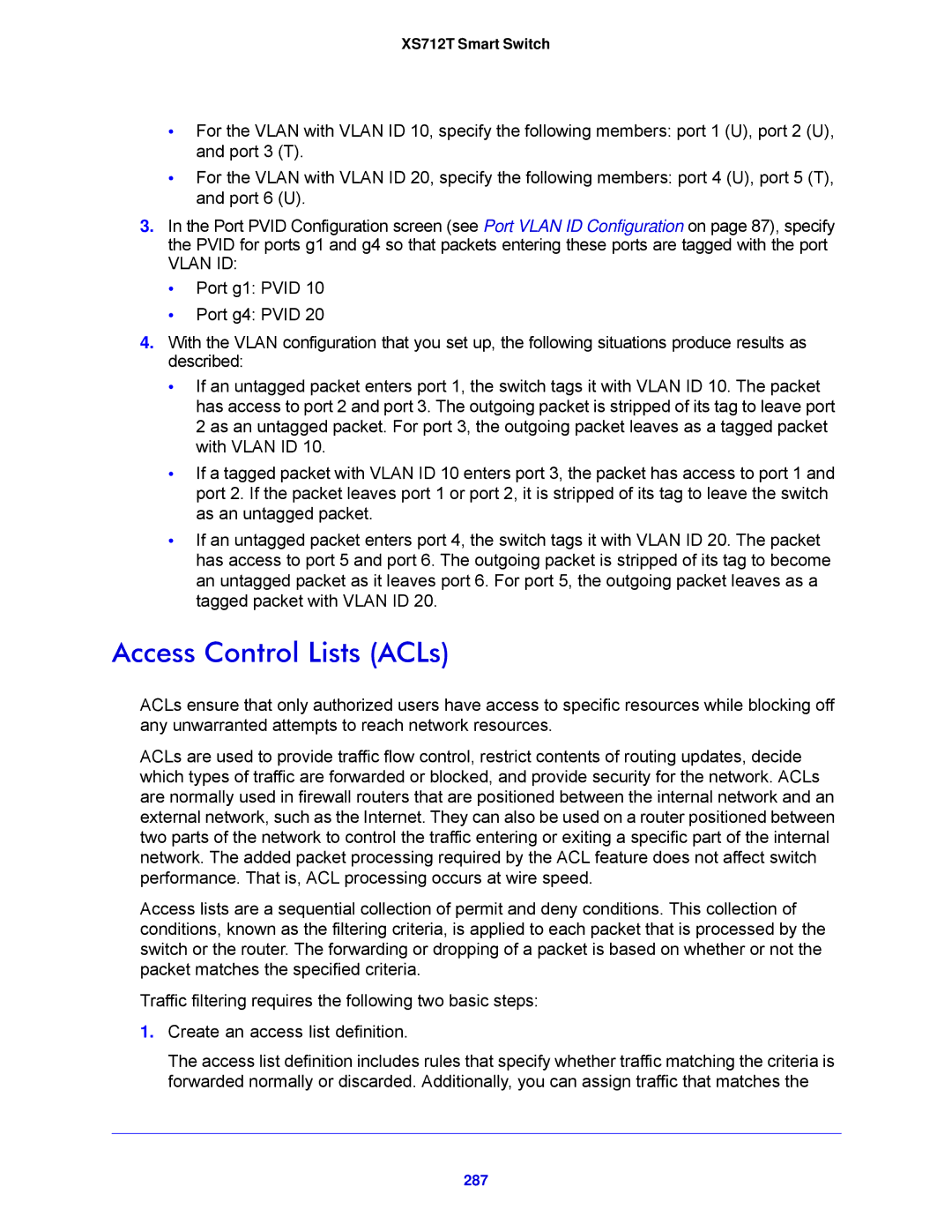XS712T Smart Switch
•For the VLAN with VLAN ID 10, specify the following members: port 1 (U), port 2 (U), and port 3 (T).
•For the VLAN with VLAN ID 20, specify the following members: port 4 (U), port 5 (T), and port 6 (U).
3.In the Port PVID Configuration screen (see Port VLAN ID Configuration on page 87), specify the PVID for ports g1 and g4 so that packets entering these ports are tagged with the port
VLAN ID:
•Port g1: PVID 10
•Port g4: PVID 20
4.With the VLAN configuration that you set up, the following situations produce results as described:
•If an untagged packet enters port 1, the switch tags it with VLAN ID 10. The packet has access to port 2 and port 3. The outgoing packet is stripped of its tag to leave port 2 as an untagged packet. For port 3, the outgoing packet leaves as a tagged packet with VLAN ID 10.
•If a tagged packet with VLAN ID 10 enters port 3, the packet has access to port 1 and port 2. If the packet leaves port 1 or port 2, it is stripped of its tag to leave the switch as an untagged packet.
•If an untagged packet enters port 4, the switch tags it with VLAN ID 20. The packet has access to port 5 and port 6. The outgoing packet is stripped of its tag to become an untagged packet as it leaves port 6. For port 5, the outgoing packet leaves as a tagged packet with VLAN ID 20.
Access Control Lists (ACLs)
ACLs ensure that only authorized users have access to specific resources while blocking off any unwarranted attempts to reach network resources.
ACLs are used to provide traffic flow control, restrict contents of routing updates, decide which types of traffic are forwarded or blocked, and provide security for the network. ACLs are normally used in firewall routers that are positioned between the internal network and an external network, such as the Internet. They can also be used on a router positioned between two parts of the network to control the traffic entering or exiting a specific part of the internal network. The added packet processing required by the ACL feature does not affect switch performance. That is, ACL processing occurs at wire speed.
Access lists are a sequential collection of permit and deny conditions. This collection of conditions, known as the filtering criteria, is applied to each packet that is processed by the switch or the router. The forwarding or dropping of a packet is based on whether or not the packet matches the specified criteria.
Traffic filtering requires the following two basic steps:
1.Create an access list definition.
The access list definition includes rules that specify whether traffic matching the criteria is forwarded normally or discarded. Additionally, you can assign traffic that matches the
